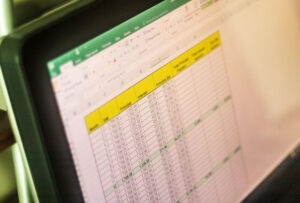You’ve probably never thought about how much you copy and paste data within your documents. You can generally can copy data to the clipboard and then paste it elsewhere when you’re ready—except within Microsoft Excel. In this article you’ll learn about Excel’s special relationship with the clipboard, as well as some options for utilizing the clipboard more effectively.
Unlike most programs, Excel helpfully identifies the information that you’ve chosen to copy to the clipboard, as shown in the first figure. You will notice an animated marquee border around the cells that you’ve copied.

To copy data to the clipboard, first select the cell or cells you wish to copy and then either choose the Copy command on Excel’s Home tab or press Ctrl-C. As long as the aforementioned border is present, you can either choose the Paste command on Excel’s Home tab, or press Ctrl-V after clicking on the cell within which you want to paste the content. Doing so will paste the entire contents as well as the formatting, including colors, bolding, etc., to the new location you specified. However, as shown in the second figure, the arrow below the Paste command reveals other pasting options, including Paste Values which converts formulas to their numeric equivalents. Click the arrow to choose from a variety of specialized commands in Excel 2010 and later, or in any version of Excel choose Paste Special (or press Alt-E-S) to reveal a dialog box that offers an array of choices.
If you’ve used Excel for any length of time you’ve probably noticed that the slightest action seemingly turns off the border  around the cells that you’ve copied and clears the clipboard. This frustrates many spreadsheet users, but it’s designed to be a protective measure. Unlike the static text that you encounter in say an email message or on a web page, Excel spreadsheets often contain formulas, which recalculate dynamically. The text in an email doesn’t change unless you type over it, but there are innumerable actions you can carry out in Excel that can cause formulas to return a different result. Accordingly, Excel is very restrictive with regard to the clipboard, which has the benefit of keeping you mindful about what you’re pasting on the spreadsheet. So, the next time that you chafe because you “lost” the data you were trying to paste, just know that Excel’s clipboard quirks aren’t designed to frustrate you, but rather to help you avoid unintended consequences within spreadsheets.
around the cells that you’ve copied and clears the clipboard. This frustrates many spreadsheet users, but it’s designed to be a protective measure. Unlike the static text that you encounter in say an email message or on a web page, Excel spreadsheets often contain formulas, which recalculate dynamically. The text in an email doesn’t change unless you type over it, but there are innumerable actions you can carry out in Excel that can cause formulas to return a different result. Accordingly, Excel is very restrictive with regard to the clipboard, which has the benefit of keeping you mindful about what you’re pasting on the spreadsheet. So, the next time that you chafe because you “lost” the data you were trying to paste, just know that Excel’s clipboard quirks aren’t designed to frustrate you, but rather to help you avoid unintended consequences within spreadsheets.
We welcome the opportunity to put our accounting expertise to work for you. To learn more about how our firm can help advance your success, don’t hesitate to contact Kathy Corcoran at (302) 254-8240.
©2024

